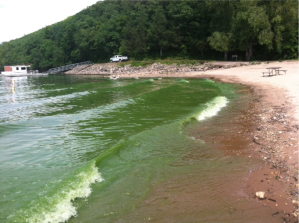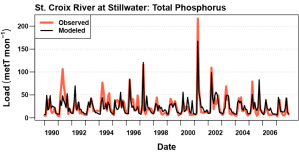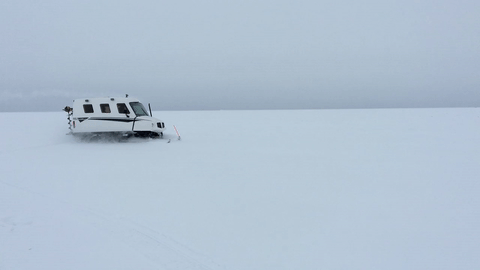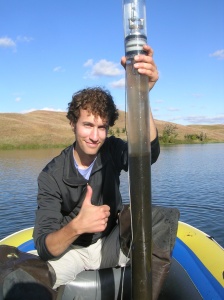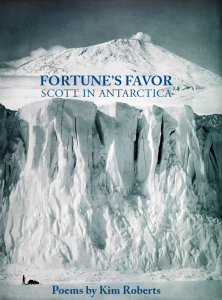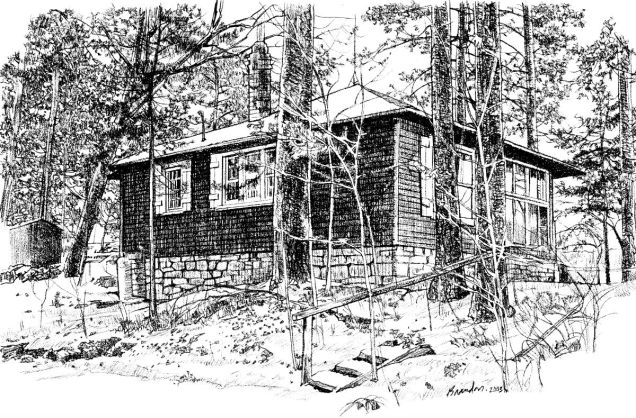
When the University of Minnesota’s Golden Gophers football team played its first game in 1882 (beating Hamline University 4-0), less than 100,000 tons of sediment washed into Lake Pepin each year, mostly eroded from the banks of the Minnesota River and its tributaries.
By the time the Gophers won their last national championship, in 1960, the amount had doubled.
And in 2009, when they played their first game in TCF Bank Stadium, five times the historic amount of soil was washing away from stream banks each year.
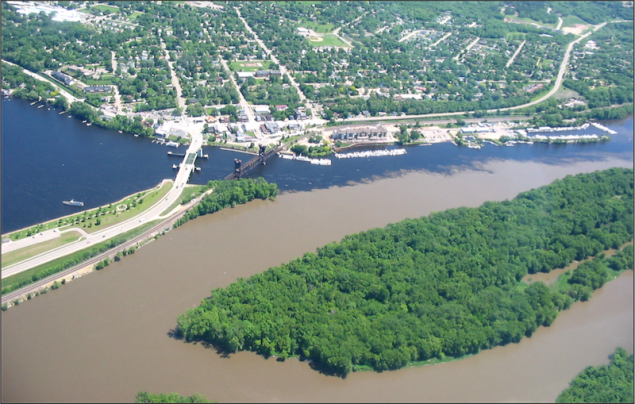

More soil is being eroded from the banks because more water is flowing down the region’s rivers. Greater flows are carving a wider channel, carrying soil from the banks and bluffs. This means muddy rivers that are choking aquatic life.
Not good. But why is there more water in many of Minnesota’s rivers?
Research Station scientist Shawn Schottler has chased the question of where all the extra dirt is coming from over the past decade. In peer-reviewed research, Schottler and colleagues have found that modern agriculture practices have radically disrupted the invisible and important process called “evapotranspiration.”
When rain falls on Minnesota, most of it goes right back to the sky. It flows into ponds and wetlands and evaporates. Plants suck it up and “breathe it out” into the atmosphere as vapor – something called transpiration.
It used to, anyway. When the land is covered with vegetation, more than three-quarters of the rain that falls rises back to the sky through evaporation or plant transpiration. When the land isn’t covered with vegetation, that just doesn’t happen.
Over the past 134 years, not only has the University of Minnesota football team’s fortunes risen and fallen, and not only has the amount of water flowing down the Minnesota River quintupled, the landscape has gone from thick prairie sod to bare soil covered with crops for a few months each year.
One of the major changes is the conversion of cropland to soybeans, which started in the 1940s.
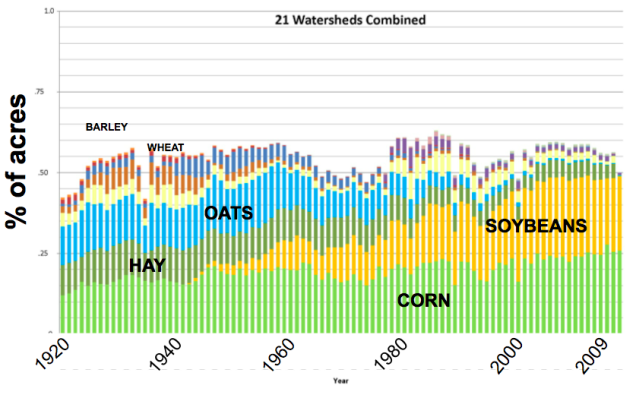
“Soybeans aren’t even planted until May,” Schottler says. “All spring, the fields are bare, and evapotranspiration is not happening.” Historically, common crops like alfalfa were growing and using water right away in May.
Schottler compares it to a personal budget. There is income – precipitation, a paycheck – and expenses – evapotranspiration, a mortgage. What comes in eventually goes out. But whether it returns to the atmosphere as vapor or runs off into rivers makes a big difference downstream.
Flow in one of the major tributaries of the Minnesota, the Cottonwood, has increased by 75 percent since 1940. That’s why two-thirds of the sediment that is filling in Lake Pepin comes from the streambanks and not the farm fields.
Not only are there growing things on the land a lot less of the year, innumerable low places where water might be trapped long enough to evaporate have been eliminated by drain tile and other methods.
“You used to have depressions on the landscape where the water flowed into and evaporated away, now we’ve gotten rid of with drainage,” says Schottler.
Precipitation has also increased in the region in the last century. Minnesota’s changing climate has caused greater rainfall – and has allowed scientists to see what river flow is caused by more precipitation, and what is caused by less evapotranspiration. The higher flows are simply not proportional to the rise in rainfall.
Most importantly, the average annual rainfall has not happened evenly over the year. Analyzing rainfall and streamflow records, Schottler and his colleagues can see that the largest increases in river flows occurred in the months of May and June. In many watersheds, there has been no significant change in the spring and early summer. The largest rainfall increases have happened in fall.
 This has all added up to more water in the rivers, more erosion of streambanks, and more soil in the water. The Golden Gophers, of course, have nothing to do with it.
This has all added up to more water in the rivers, more erosion of streambanks, and more soil in the water. The Golden Gophers, of course, have nothing to do with it.
The wins and losses of University of Minnesota football have absolutely no effect on sediment loads, even though their loss percentage has increased at a rate nearly identical to the loss of soil from stream banks.
Correlation is not causation, as they say. But factors like increased precipitation also haven’t had appreciable effects, while other big changes on the landscape have drastically changed the very width of our rivers.
